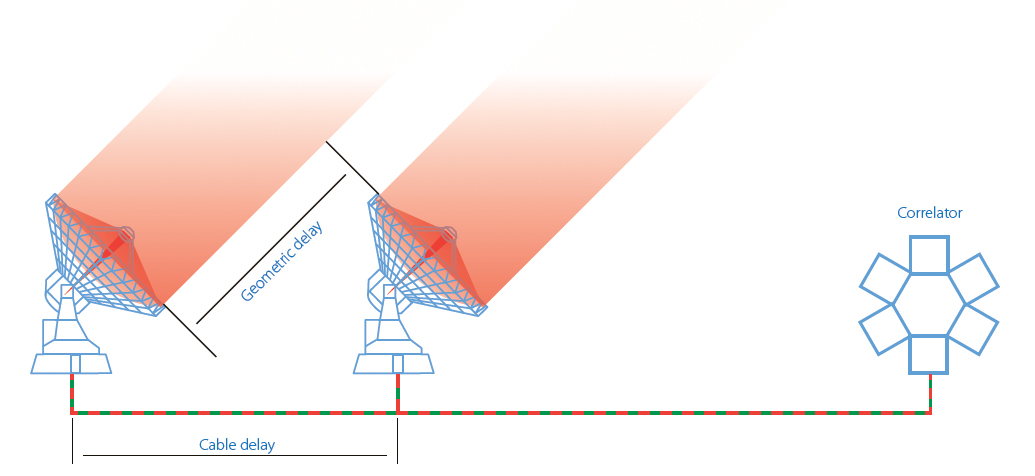How it works
The NOEMA Observatory is a so called ‘interferometer’. Interferometry achieves high-resolution observations using a cluster of comparatively small telescopes rather than a single large telescope. In practical terms the NOEMA interferometer is composed of twelve 15-meter antennas and is capable of synthesizing a telescope with a diameter of 760 meters. Once construction is finished, the maximum diameter increases up to 1.7 kilometers with a 2120 square meters collecting surface.
The antennas travel along two sets of rails enabling them to be placed in a variety of configuration along a north-south and east-west axis.
The antennas are synchronized to move together enabling them to track the same source. The rotation of the earth, which slowly turns the antennas with respect to the source, enables step-by-step scanning of the source’s structure.
Mapping the cosmic signals
Signals are captured by the parabolic surfaces of the 15-meter antennas and bounced towards their sub-reflectors. The signals are then aimed at the receivers located inside each of the antenna cabins.
These incoming signals are extremely weak due to the great cosmic distances from the source. To amplify the signals, the receivers start by converting them to a lower frequency. These signals are then combined inside the mixer-blocks with a locally produced signal at a frequency similar to that of the original signal. The super-conducting junction is the active element of the mixer. It sends out the difference between the two incoming signals, the so-called intermediate frequency, which is low enough to be amplified.
Signals are then sent to the observatory's main building by a network of low-loss cables running underground.
Located in the main building of the observatory, the correlator plays a key role in collecting signals coming from the antennas.
With a processing power of thousands of billions of operations per second, the correlator is able to filter out the smallest signal from the background noise generated by quantum effects and the environment. Unlike these random noises, the cosmic signal usually does not vary. The correlator averages the incoming signal over time, so that noise diminishes and the cosmic signal gradually appears. Simultaneously, the correlator compensates for the signals’ delays caused by the earth’s rotation, antenna positions and cable lengths.

By analyzing and classifying thousands of incoming frequencies, the correlator enables astronomers to identify molecules. Using the temporal delay of the signals reaching the antennas, it also provides necessary information about the sources’ positions on the sky. This is why a special electronic device continuously measures to an accuracy of a millimeter the cables’ length between the antennas and the main building.

